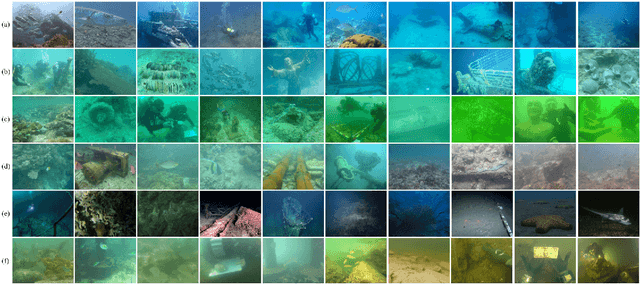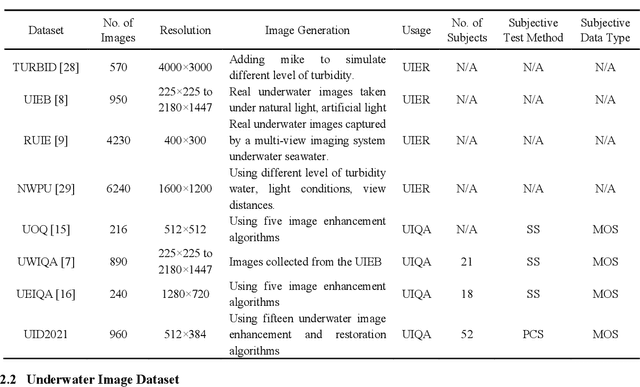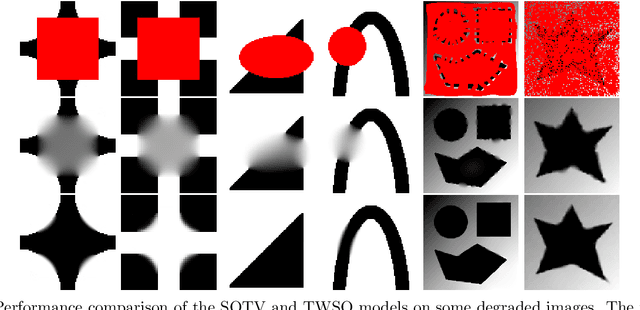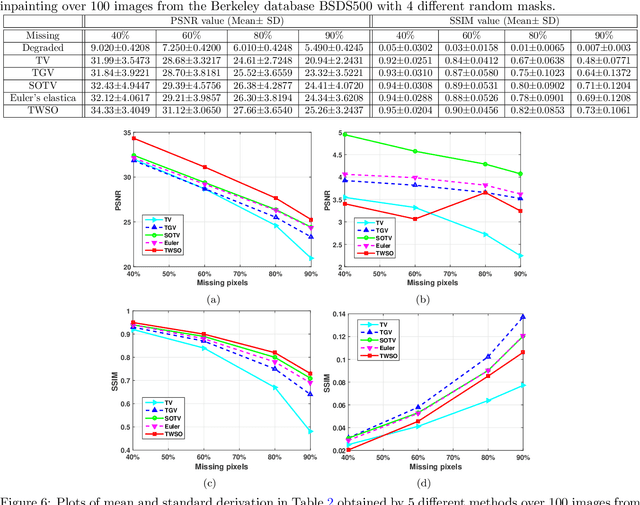Zhenkuan Pan
Weighted Poisson-disk Resampling on Large-Scale Point Clouds
Dec 12, 2024Abstract:For large-scale point cloud processing, resampling takes the important role of controlling the point number and density while keeping the geometric consistency. % in related tasks. However, current methods cannot balance such different requirements. Particularly with large-scale point clouds, classical methods often struggle with decreased efficiency and accuracy. To address such issues, we propose a weighted Poisson-disk (WPD) resampling method to improve the usability and efficiency for the processing. We first design an initial Poisson resampling with a voxel-based estimation strategy. It is able to estimate a more accurate radius of the Poisson-disk while maintaining high efficiency. Then, we design a weighted tangent smoothing step to further optimize the Voronoi diagram for each point. At the same time, sharp features are detected and kept in the optimized results with isotropic property. Finally, we achieve a resampling copy from the original point cloud with the specified point number, uniform density, and high-quality geometric consistency. Experiments show that our method significantly improves the performance of large-scale point cloud resampling for different applications, and provides a highly practical solution.
Dual High-Order Total Variation Model for Underwater Image Restoration
Jul 20, 2024Abstract:Underwater images are typically characterized by color cast, haze, blurring, and uneven illumination due to the selective absorption and scattering when light propagates through the water, which limits their practical applications. Underwater image enhancement and restoration (UIER) is one crucial mode to improve the visual quality of underwater images. However, most existing UIER methods concentrate on enhancing contrast and dehazing, rarely pay attention to the local illumination differences within the image caused by illumination variations, thus introducing some undesirable artifacts and unnatural color. To address this issue, an effective variational framework is proposed based on an extended underwater image formation model (UIFM). Technically, dual high-order regularizations are successfully integrated into the variational model to acquire smoothed local ambient illuminance and structure-revealed reflectance in a unified manner. In our proposed framework, the weight factors-based color compensation is combined with the color balance to compensate for the attenuated color channels and remove the color cast. In particular, the local ambient illuminance with strong robustness is acquired by performing the local patch brightest pixel estimation and an improved gamma correction. Additionally, we design an iterative optimization algorithm relying on the alternating direction method of multipliers (ADMM) to accelerate the solution of the proposed variational model. Considerable experiments on three real-world underwater image datasets demonstrate that the proposed method outperforms several state-of-the-art methods with regard to visual quality and quantitative assessments. Moreover, the proposed method can also be extended to outdoor image dehazing, low-light image enhancement, and some high-level vision tasks. The code is available at https://github.com/Hou-Guojia/UDHTV.
Optimizing ADMM and Over-Relaxed ADMM Parameters for Linear Quadratic Problems
Jan 01, 2024



Abstract:The Alternating Direction Method of Multipliers (ADMM) has gained significant attention across a broad spectrum of machine learning applications. Incorporating the over-relaxation technique shows potential for enhancing the convergence rate of ADMM. However, determining optimal algorithmic parameters, including both the associated penalty and relaxation parameters, often relies on empirical approaches tailored to specific problem domains and contextual scenarios. Incorrect parameter selection can significantly hinder ADMM's convergence rate. To address this challenge, in this paper we first propose a general approach to optimize the value of penalty parameter, followed by a novel closed-form formula to compute the optimal relaxation parameter in the context of linear quadratic problems (LQPs). We then experimentally validate our parameter selection methods through random instantiations and diverse imaging applications, encompassing diffeomorphic image registration, image deblurring, and MRI reconstruction.
UID2021: An Underwater Image Dataset for Evaluation of No-reference Quality Assessment Metrics
Apr 19, 2022



Abstract:Achieving subjective and objective quality assessment of underwater images is of high significance in underwater visual perception and image/video processing. However, the development of underwater image quality assessment (UIQA) is limited for the lack of comprehensive human subjective user study with publicly available dataset and reliable objective UIQA metric. To address this issue, we establish a large-scale underwater image dataset, dubbed UID2021, for evaluating no-reference UIQA metrics. The constructed dataset contains 60 multiply degraded underwater images collected from various sources, covering six common underwater scenes (i.e. bluish scene, bluish-green scene, greenish scene, hazy scene, low-light scene, and turbid scene), and their corresponding 900 quality improved versions generated by employing fifteen state-of-the-art underwater image enhancement and restoration algorithms. Mean opinion scores (MOS) for UID2021 are also obtained by using the pair comparison sorting method with 52 observers. Both in-air NR-IQA and underwater-specific algorithms are tested on our constructed dataset to fairly compare the performance and analyze their strengths and weaknesses. Our proposed UID2021 dataset enables ones to evaluate NR UIQA algorithms comprehensively and paves the way for further research on UIQA. Our UID2021 will be a free download and utilized for research purposes at: https://github.com/Hou-Guojia/UID2021.
The Chan-Vese Model with Elastica and Landmark Constraints for Image Segmentation
May 27, 2019



Abstract:In order to separate completely the objects with larger occluded boundaries in an image, we devise a new variational level set model for image segmentation combing the recently proposed Chan-Vese-Euler model with elastica and landmark constraints. For computational efficiency, we deign its Augmented Lagrangian Method(ALM) or Alternating Direction Method of Multiplier(ADMM) method by introducing some auxiliary variables, Lagrange multipliers and penalty parameters. In each loop of alternating iterative optimization, the sub-problems of minimization can be solved via simple Gauss-Seidel iterative method, or generalized soft thresholding formulas with projection methods respectively. Numerical experiments show that the proposed model not only can recover larger broken boundaries, but also can improve segmentation efficiency, decrease the dependence of segmentation on tuning parameters and initialization.
Tensor Based Second Order Variational Model for Image Reconstruction
Sep 27, 2016



Abstract:Second order total variation (SOTV) models have advantages for image reconstruction over their first order counterparts including their ability to remove the staircase artefact in the reconstructed image, but they tend to blur the reconstructed image. To overcome this drawback, we introduce a new Tensor Weighted Second Order (TWSO) model for image reconstruction. Specifically, we develop a novel regulariser for the SOTV model that uses the Frobenius norm of the product of the SOTV Hessian matrix and the anisotropic tensor. We then adapt the alternating direction method of multipliers (ADMM) to solve the proposed model by breaking down the original problem into several subproblems. All the subproblems have closed-forms and can thus be solved efficiently. The proposed method is compared with a range of state-of-the-art approaches such as tensor-based anisotropic diffusion, total generalised variation, Euler's elastica, etc. Numerical experimental results of the method on both synthetic and real images from the Berkeley database BSDS500 demonstrate that the proposed method eliminates both the staircase and blurring effects and outperforms the existing approaches for image inpainting and denoising applications.
 Add to Chrome
Add to Chrome Add to Firefox
Add to Firefox Add to Edge
Add to Edge